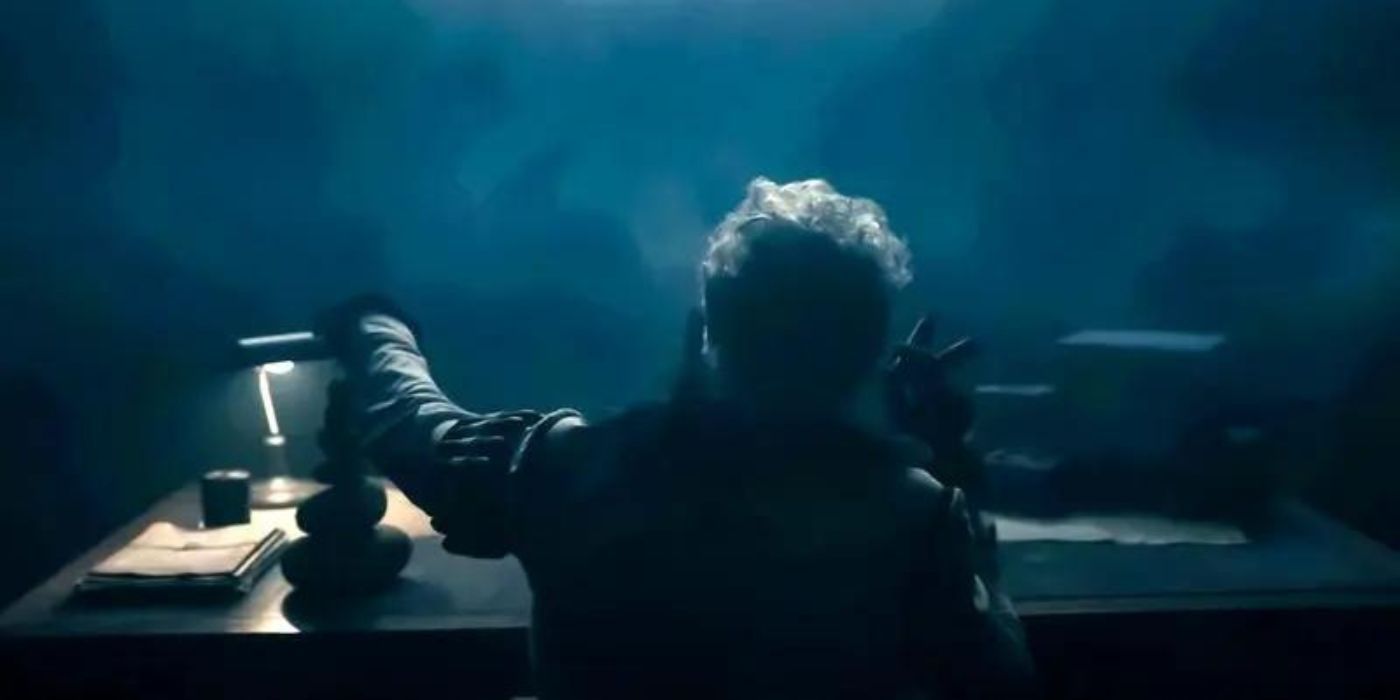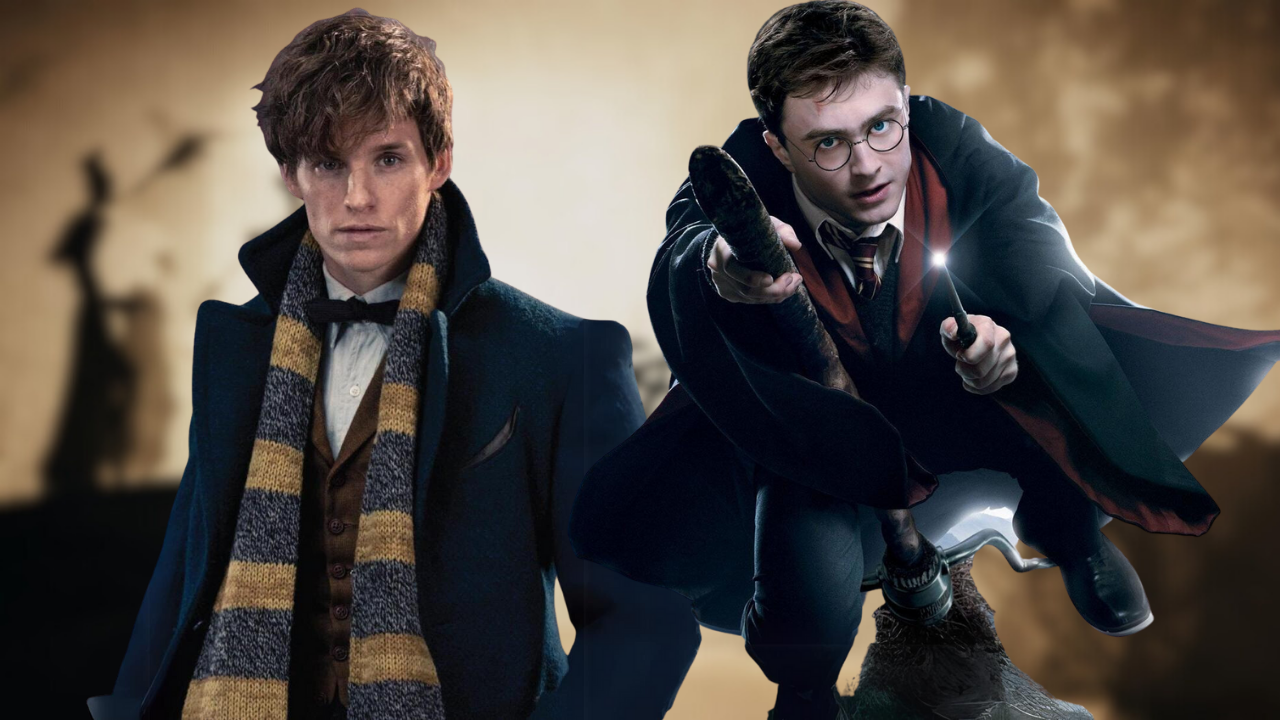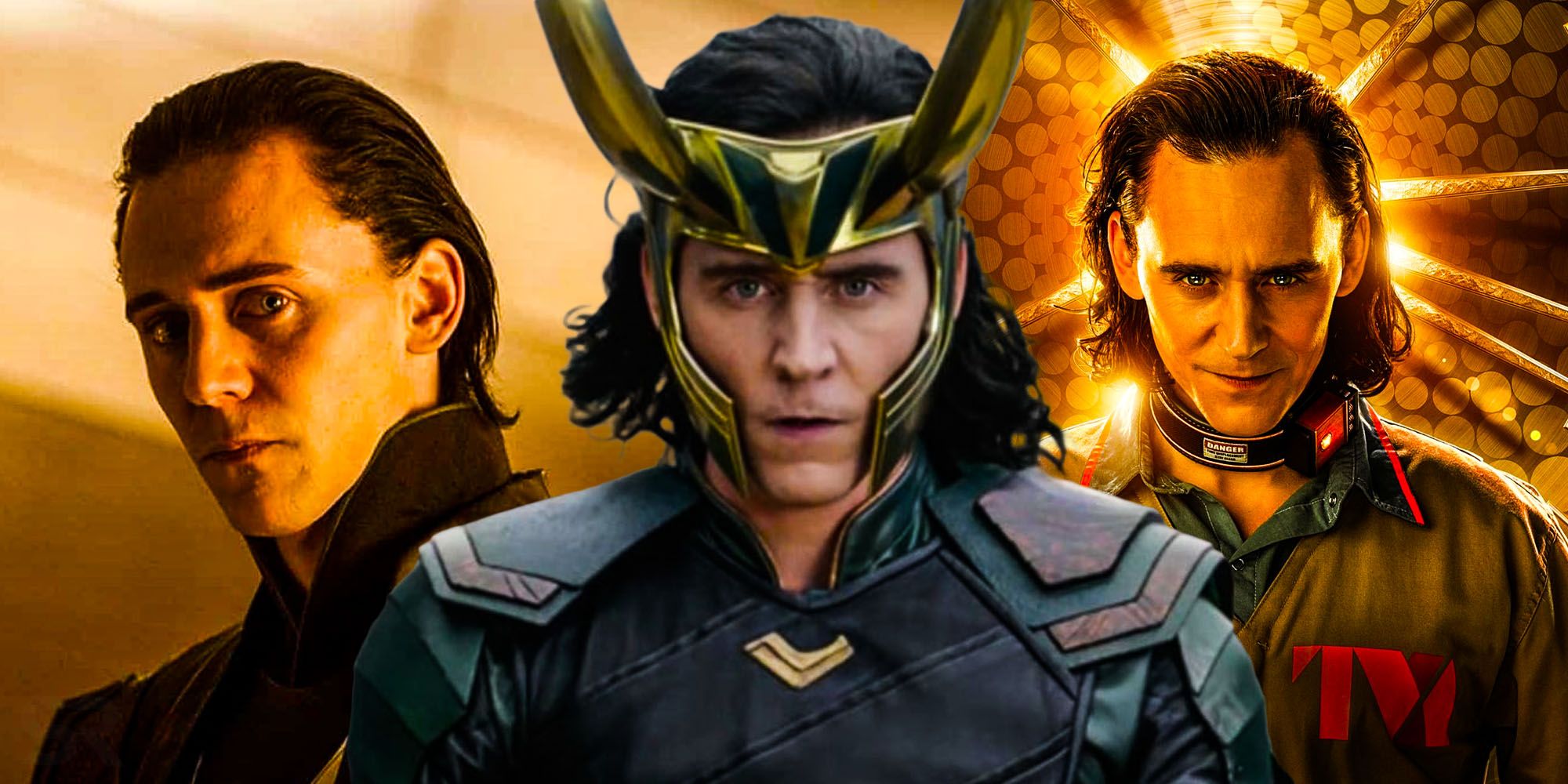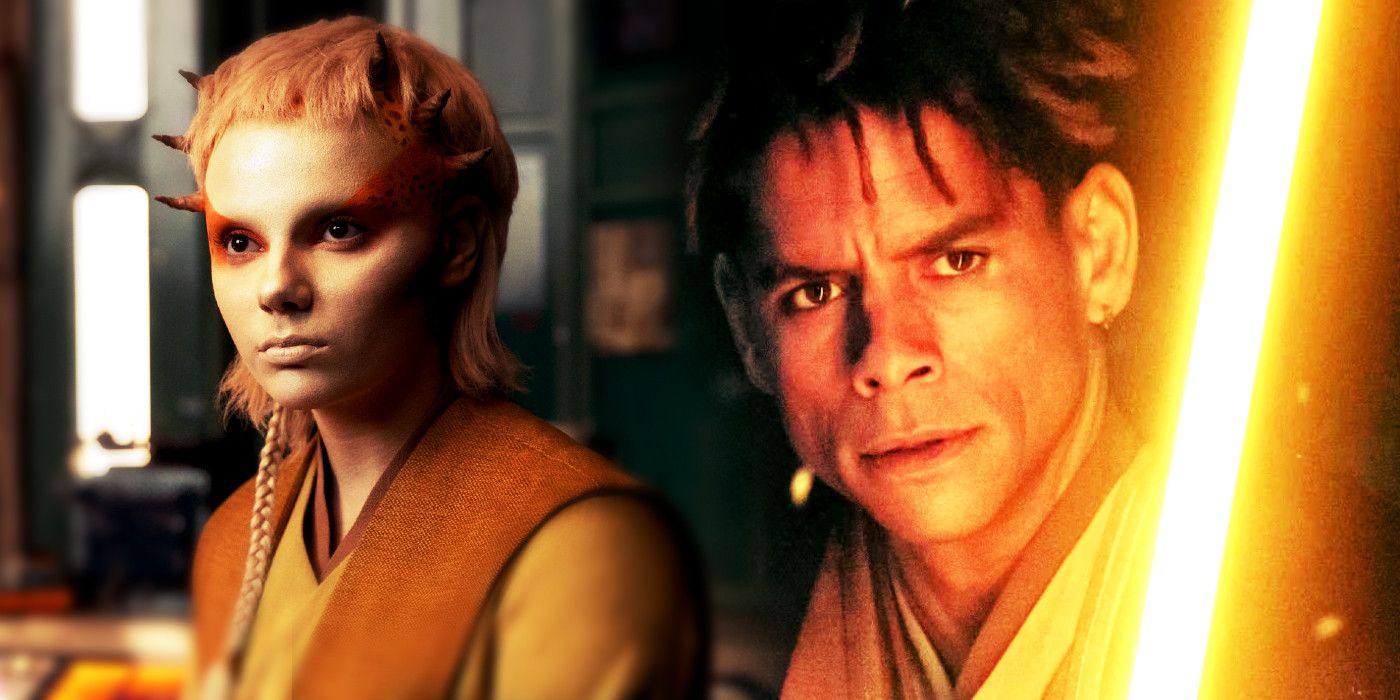Some of Edgar Allan Poe’s most iconic tales are getting a modern twist with The Fall of the House of Usher. Created by The Haunting of Hill House‘s Mike Flanagan and adapting a variety of the author’s works, the Netflix horror show centers on the eponymous family of a pharmaceutical company CEO as they all find themselves punished for their various sins by a mysterious woman from the family patriarch’s past.
The Fall of the House of Usher ensemble cast features a number of Flanagan vets and newcomers, including Carla Gugino, Bruce Greenwood, Rahul Kohli, Henry Thomas, Zach Gilford, Kate Siegel, Mary McDonnell, Samantha Sloyan, T’Nia Miller, Sauriyan Sapkota, Ruth Codd, Carl Lumbly, Kyliegh Curran and Mark Hamill. Combining grandiose and bloody set pieces with intricate character drama, the show continues Flanagan’s win streak as he closes out his time as Netflix.
In honor of the show’s release, Screen Rant spoke exclusively with production designer Laurin Kelsey to discuss The Fall of the House of Usher, translating Poe’s aesthetics to the modern day, the cast’s input on developing their characters’ sets, and how color plays a big factor into the show’s biggest scares.
Laurin Kelsey Breaks Down The Fall of the House of Usher
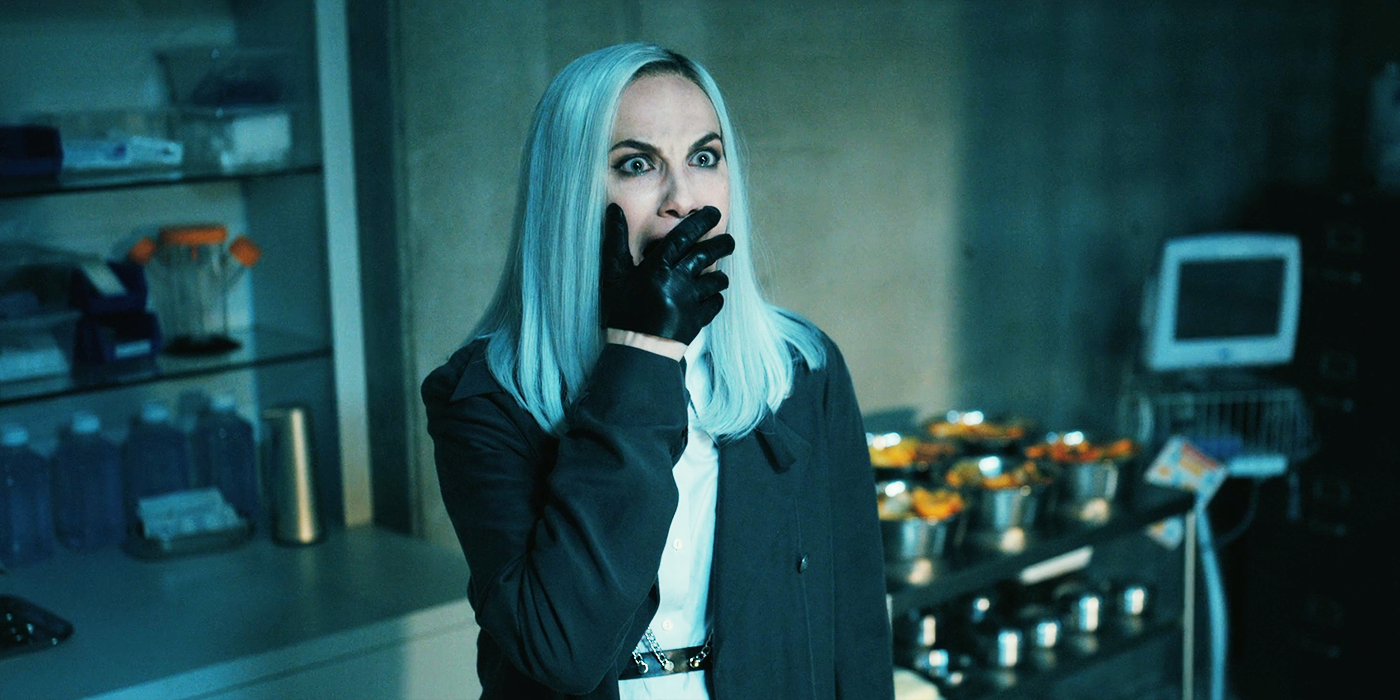
Screen Rant: I am super excited to talk about Fall of the House of Usher. In case my Midnight Club vinyl back there doesn’t show, I’m a big Mike Flanagan fan, so this has been on my radar since it was announced. You worked with Mike on that show, but what was it like when he first approached you to reunite with him for this one?
Laurin Kelsey: Well, it was a very, very quick reuniting because we literally finished Midnight Club on Friday and then Monday morning started Usher, so literally just a weekend. [Laughs] I was really honored, and I feel very privileged to have been invited back to work with Mike so many times. He’s very talented, very detailed, and I love his writing, so having something to sink my teeth into like Usher, which has a lot of meat to it, was really, really exciting.
How immersed were you in Poe’s works prior to him approaching you to come back for the show?
Laurin Kelsey: You know what, I studied art history and theater production design in university, so I had a lot of exposure to literature at the time, but I hadn’t revisited Poe since then, so it’s been a good 20 years. It was really exciting, as it always is with Mike, when you get a new show and a new script, and you go back to the original content to see his inspiration and where he started. Because, as I’m sure you’re very well aware, every story that he starts with, the origins, they’re actually very small, they’re very short. Fall of the House of Usher is a very small short story by Edgar Allan Poe, and Midnight Club is a very short book, as well.
You go back to see how he takes it and layers it with other stories and grows it into this very intricate, very layered storyline is always just mind-blowing to me. I always think I’m gonna go back to the origin story and find out all of these amazing clues and all of these things, and I always get back to it and realize, actually, there’s not a lot of hints there for me to work from, because Mike really does build things out a lot, which is so cool.
Poe’s works were very 1800s Gothic style. Did you find that challenging or easy to translate those aesthetics into your production design for the modern day?
Laurin Kelsey: I think it was actually really interesting, and an interesting challenge, because all the period works in the show, like the older time periods that we visited, those were a lot easier to incorporate in, but as you alluded to, taking a modern big glass high rise apartment and finding a way to instill the value of the Poe of it all is very challenging. I think I let the script and the writing do a lot of the heavy lifting for a lot of the references, and more I tried to create an overarching world that felt Gothic and creepy, and it could have the dark side like Poe’s work in that time period, rather than specific elements in the sets that could speak to that especially in the modern.
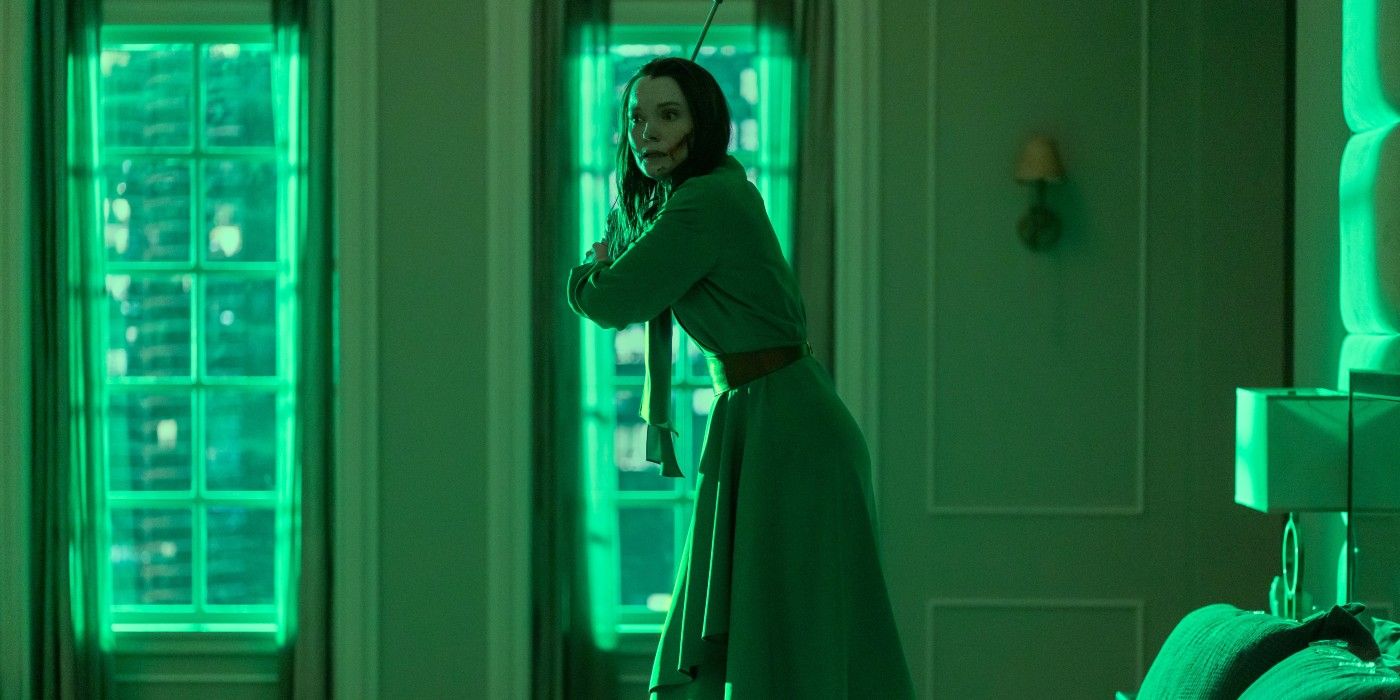
Which set did you find the most exciting to really find that balance?
Laurin Kelsey: In my more modern world, I really liked Tamerlane’s apartment, even though it’s one of the lighter, brighter spaces. Ultimately, it was one of the ones that had a little bit more architecture, because as modern as our time period was for her, I gave her a little bit more of a classical feel and having big archways and more detailed and ornate moldings was kind of a little place where I could insert that. Also with color, being able to desaturate so that when we did go to the dark places, you could give more shadows and more creep and more atmosphere that felt more Gothic. I think hers was one of the ones that could be executed a little bit [easier], it came across a little bit stronger.
Then, in the more period sets, my favorite one to instill some of the Poe in was his Roderick’s childhood home, which was a really interesting set, probably my favorite because the set itself was written as a 1950s suburban home, but obviously his mom is not from financial means, so it couldn’t be anything extravagant. But, also, it needed to be the original house from the Fall of the House of Usher, being a Gothic-Victorian, so, you know, Gothic-Victorian and 1950s suburbia don’t really generally coexist.
It was really a fun challenge to sort of say, “Okay, I’m going to say that in 1950s suburbia, they’re a little bit more down on their luck, and therefore, their house is actually another 60 or 70 years old, and it’s just been updated, so they’ve got a ’50s spin on an 1890s Victorian home, and that the other houses on the street are kind of a hodgepodge of character homes from the similar time period, and that’s what makes up their suburbia.” That meant I could do a detailed fireplace, and I could do heavy wood details, and I could do cool wallpapers and bring sort of a little bit more Poe into that space.
One of the things that I especially love was the way that colors play into every set, very specifically towards each character and each story. Did that come from your interpretation of Mike’s work, or from Mike’s work itself?
Laurin Kelsey: Actually, it was really interesting. So, Mike came up with the colors, and in one of the very, very early meetings, he said, “You know, I’ve given every Usher a color, and I don’t know yet how we’re going to incorporate the colors, or where, or when, but I want to see a color story, and here are their specific colors.” I think, for me, who doesn’t love color, but I love to help create a cohesiveness, especially when you have multiple time periods, multiple levels of wealth, and you’re in so many worlds. One of my strategies for making it feel really cohesive is to limit my palette, and try to build a very specific world of color, and not step outside that. That would be what can connect a 1970s bar to a 2023 glass/steel apartment. So, when he said everybody had a color, I thought, “Oh no, there goes my cohesive color plan.” [Laughs]
But I think it was a really cool challenge, because once he set those out, I sat down with Michael Fimognari, who is the co-director and the director of photography, who’s an amazingly talented guy. We spent many hours talking about where the color was, and how we could make the colors make sense, because he was of the same mind that it would be really easy to get cluttered feeling visually if we didn’t control that aspect of the world. So, I pitched to Michael to do sort of a dual-tone palette, in that we would just tweak everything a little bit more period, so the red becomes more scarlet, and the blue becomes more sapphire, and we’re going more emerald with our greens.
Then, from there, we delved in further and said, “Okay, in terms of the sets, we’re going to mute the colors, so that we can then saturate with light, or bring a pop of color with a costume, or hair, or whatever it happens to be, rather than oversaturate the color on our end in production design, and then have nowhere to go with the other departments.” I think that was sort of the key for us to unlocking how to incorporate the colors, because I think it’s a really cool idea, and I love how it works, especially with lighting, Michael did a great job.
That was actually going to be my next question was the lighting itself, because I love the saturation of light that comes in when everybody starts to experience what they experience. How much of that was involved from you versus Michael or Mike?
Laurin Kelsey: I think Michael really was the driving force in the lighting. Obviously, him and Mike also have their own meetings where they discussed the lighting and more detail that I wasn’t a part of. Between Michael and I, Michael was really the driving force of how saturated he wanted to make it, and which points he wanted to punctuate, especially for his episodes, as well, so my role was really to help him explain the lights and build a set and a paletted backdrop that would accentuate the light when he wanted it and where he wanted it.
One of the most challenging parts was to find practical sources for the light so that we could explain it, because as much as there’s the supernatural of it, you have room to explain it away. There is a line earlier on where you still feel like it’s realistic until he pushes it past that point. And up until that point, I needed to show that light comes from this lamp, or from this neon, or from whatever the source happens to be, the moon. That was sort of our biggest discussion with lighting, and after that, Michael just did what he does, which is take it all the way.
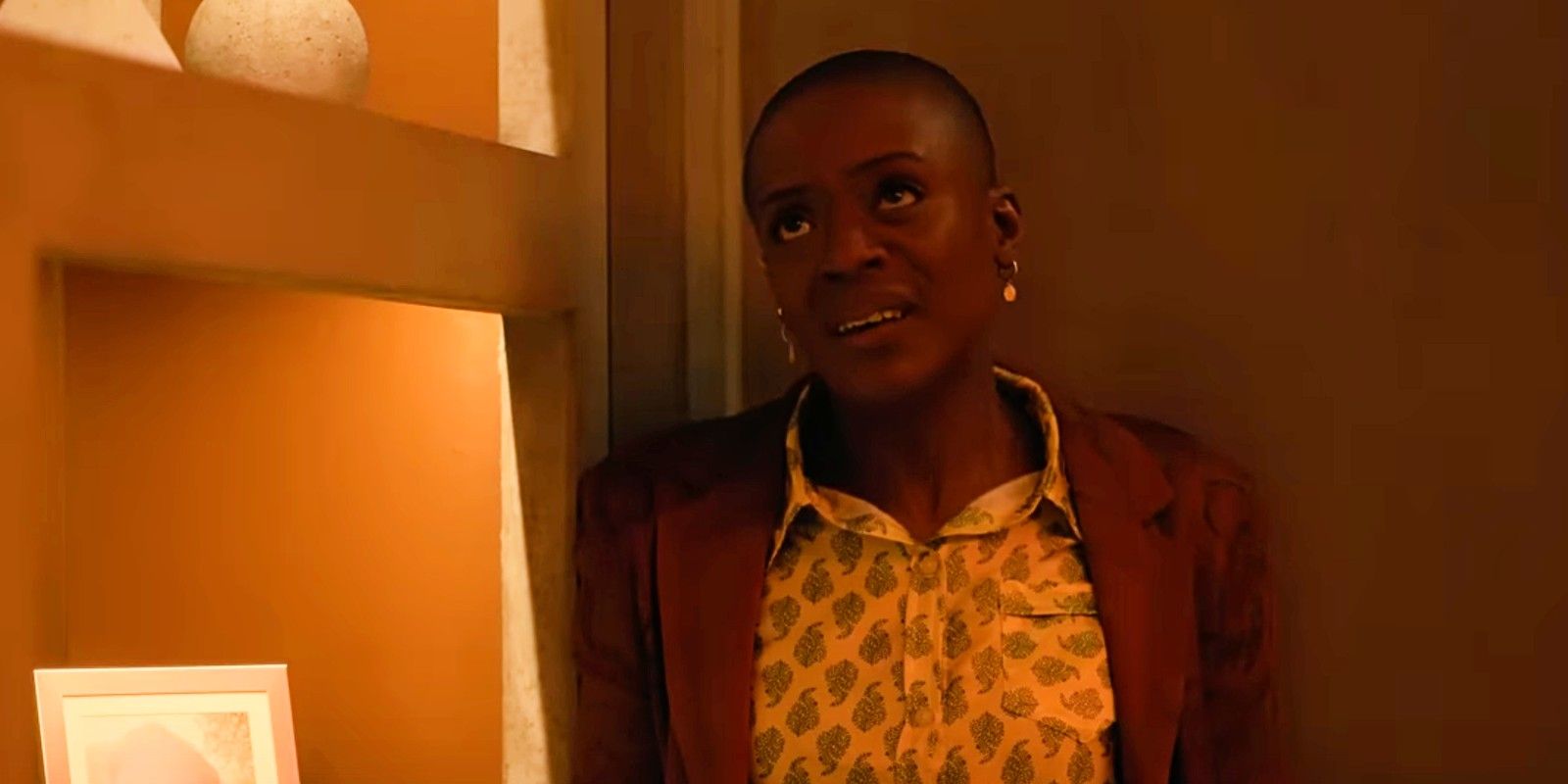
You talked earlier about how much you loved Tamerlane’s apartment, but who would you say was the most challenging location to sort of envision both from your interpretation of the scripts and Mike’s drive?
Laurin Kelsey: That’s a great question. I think it wasn’t really a specific one so much as it was the children as a group, because in so many ways, they’re very similar in that they have an excessive amount of money, and excess amount of their own specific taste. They have a lot of personality, but when you have millions and millions of dollars, and you all live in the same city, how do you have different looking homes? And what does that mean for each of them? What can I do to show that they’re still different and individual characters? So, rather than just one being hard, it was more like, “Okay, so Perry’s in an apartment and Camille’s in an apartment, what makes those different? What architecture makes it different? Which part of the city did they live in? What furniture are they interested in?” And then making sure that everybody had a distinct feel, and something that said, “This is my space, and this is how I spent my money.” I think that was the hardest part was making them feel different.
I find it hilarious that Thor’s hammer made its way in there. How did you go about decorating the sets in terms of figuring out what could be in there and what couldn’t be?
Laurin Kelsey: Yeah, I think decorating is one of my favorite parts of the process. The reason it’s a favorite part of mine is because it is a layering process, and it’s not just a layering of objects and items and dressing, but it’s a layering of other opinions, as well, which is to say that we have Mark Lane, the set decorator, and sometimes we even have actors come in the day before, which I’m open to, where they can give a little insight into their character.
It becomes a process where you are selecting what you think makes sense, but you’re learning about the character as you build the space out, and as you think, “Well, he would have that there, or he would not have that there.” And I love that, because that’s where I think you get a lot more depth in terms of the detail that can come in. It’s definitely a really fun process to discover someone, and someone’s character beyond what you thought you knew, because you do you just continue to discover them as you build their worlds.
Which actor would you say offered you the most additional insight for their set?
Laurin Kelsey: Actually, I would say it was Leo’s, Rahul, he was lovely, we included a lot of details. Because he’s English, we connected beforehand, and he expressed he was a huge Liverpool fan. So, we brought in his football club details into the kitchen, and my partner’s actually English, we borrowed some things from his apartment knowing that Rahul was open to [the idea] that he would have those iconic pieces from his childhood, or he wanted to see a photo of Wembley Stadium, because he said that’s where his character’s from, that’s his hometown, and he would have that picture in his place.
It was really great to have that kind of fun, additional layer in the way that it was. I mean, it’s all suggestion, right? But that’s so valuable, who knows the characters better at that point, right? They’re the ones delving really deep to find what that means for them, and why wouldn’t you draw on that to help add more?
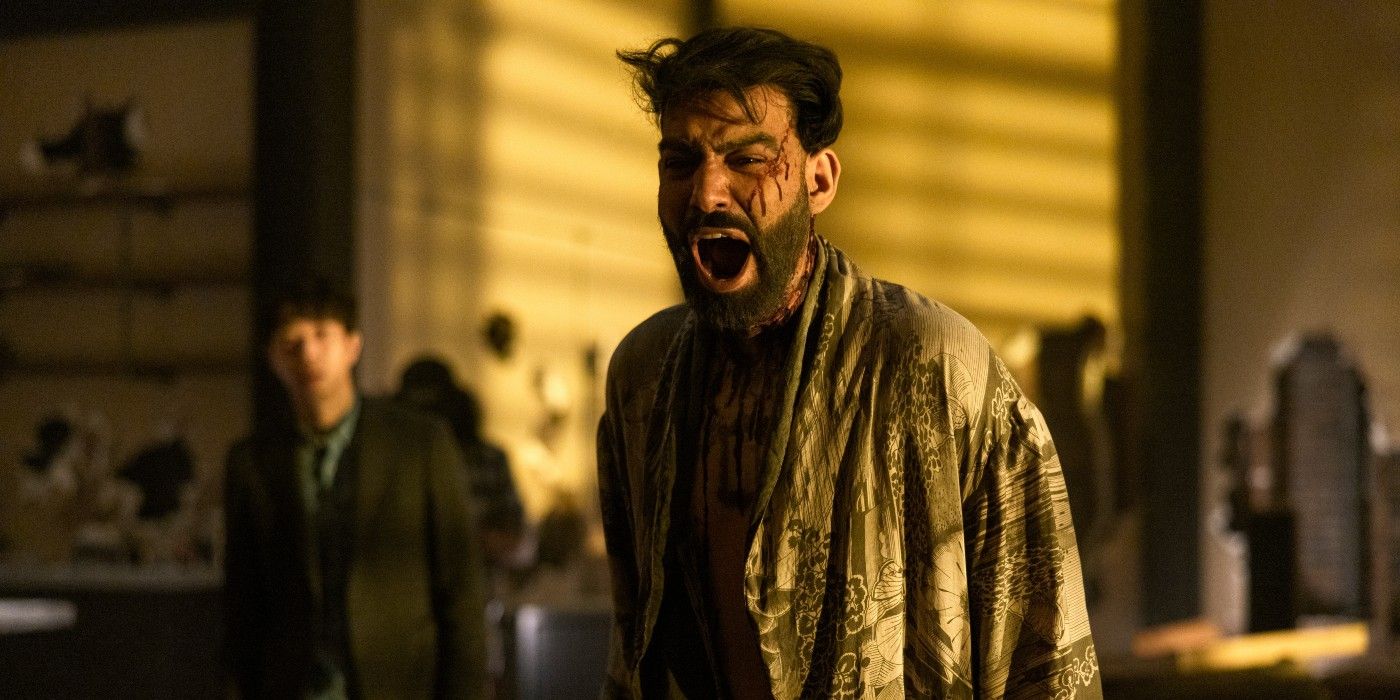
I love that Rahul did that; he’s clearly such a great collaborator when it comes to Flanagan’s projects. How much of the production design and sets were filled with Easter eggs to Poe’s works? There is Raven imagery throughout, but what other things did you hide throughout these sets?
Laurin Kelsey: I love being able to get to the level where we can add those details in for people to look at, and I think there’s a lot. There’s actually quite a few, and one of my favorite ones is Perry has his party space, and he has his bathroom, and I saw this amazing graffiti — I can’t remember where I saw it, maybe just online, but it was a poem scrawled across the wall. I think it was actually an anti-Trump thing, but anyhow, I thought, “Oh, that’s so cool. That’s so great, the way that it looks so organic and rebellious, and that’s so Perry.”
So, in the bathroom, there’s a paragraph from The Masque of the Red Death scrawled across the wall in the bathroom graffiti, which is quite large right behind them. I thought that was kind of a fun, hidden little piece. And there’s other things, like in the bar in the 1970s, behind Verna, the stained-glass is all based on Edgar Allan Poe stories and imagery. It’s all just very dimly lit amber glass, but we’ve got The Black Cat in there, and the horse, and a bunch of other imagery from his work. There’s smaller ones that will be harder to find, like the house numbers are always years associated with Edgar Allan Poe, like the year of his death, or the year of his birth, things like that. Yeah, there’s lots of cool little fun ones to find, but those are my favorite.
This is probably Mike’s bloodiest show to date, which is pretty crazy to think. How much collaboration do you have with the special effects team to ensure that it looks right on the set, and that it doesn’t necessarily mess up the set so much that you cannot rework it for another scene?
Laurin Kelsey: Yeah, I think it was a really interesting one. Obviously, Perry’s party was a big, big build for us, a big collaborative build. There’s a lot of different departments involved in that particular one, including special effects makeup, but also special effects doing the goo and the blood, the paint department doing all the acid, and the breakdown of all of the set, and then set dec just dressing all the furniture with paint, like collaborating with paint. So, a lot of different layers of people in there to do that kind of work, and it’s always really fun. I think as long as everybody is on the same page in terms of the clear vision of what it is, then we can execute it, and everybody knows where they’re headed. Then, it’s just a matter of really good communication, and kind of constantly working together to get there.
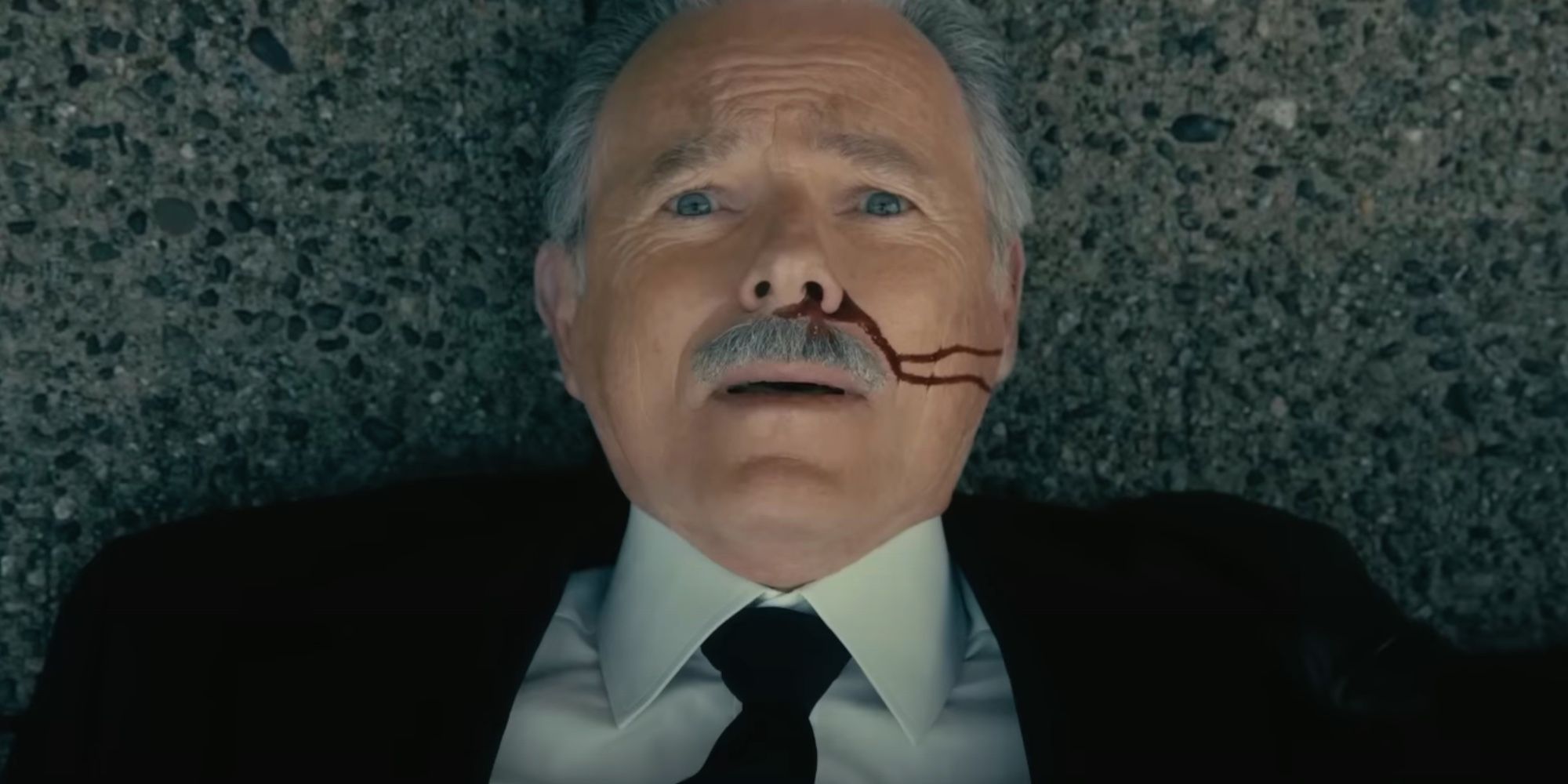
Well, the teamwork has paid off, and the reviews are high for it. Have you been seeing any of them, and what are your takeaways?
Laurin Kelsey: Yeah, I’ve seen some of them. I mean, they’re great, I think they’re really bang on. Mike is an extremely talented, multi-talented man, and I think that when the reviews say it’s very bold, it’s very daring, and it’s very strong, he really went for it. I love that, because he did, and I love that that’s being recognized and noticed, because it’s a bold show. It’s very ballsy, I love that, so I’m glad that it comes across and people are enjoying it. Because that’s what we’re here to do, right? We’re creating things and expressing ourselves for the enjoyment of everyone, so if they’re enjoying it, we did it right.
About The Fall of the House of Usher

From Mike Flanagan, the creator of The Haunting of Hill House and Midnight Mass, a wicked horror series based on the works of Edgar Allan Poe. Ruthless siblings Roderick and Madeline Usher have built Fortunato Pharmaceuticals into an empire of wealth, privilege and power. But past secrets come to light when the heirs to the Usher dynasty start dying at the hands of a mysterious woman from their youth.
The Fall of the House of Usher is now streaming on Netflix.
